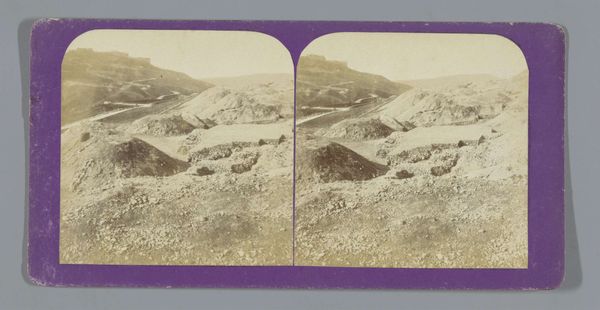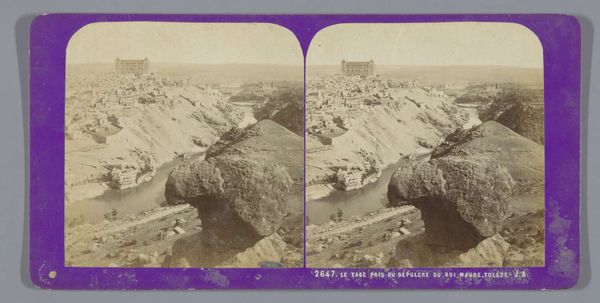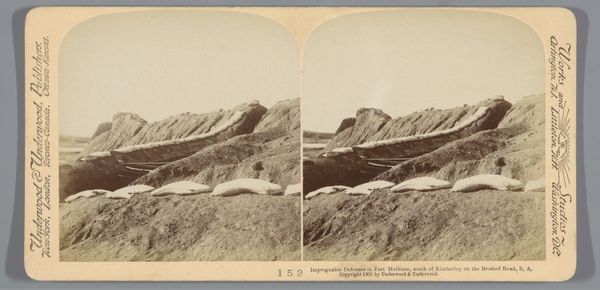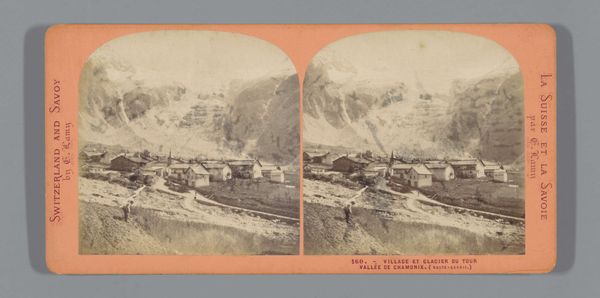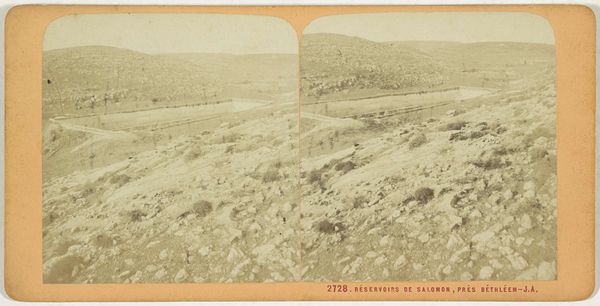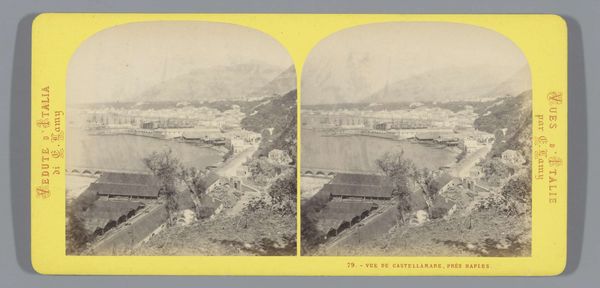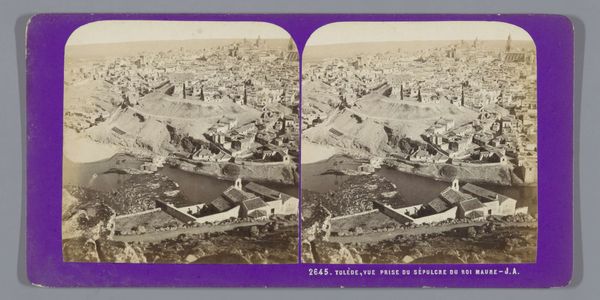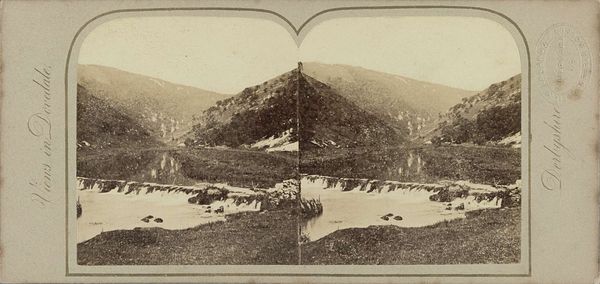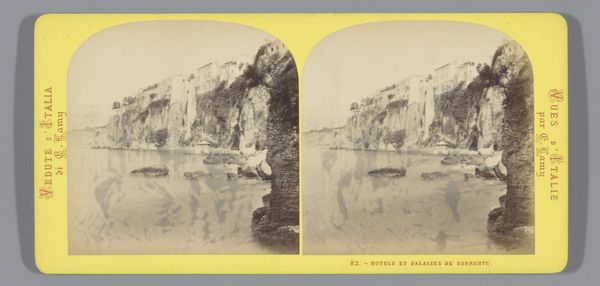
photography
#
landscape
#
river
#
photography
#
coloured pencil
Dimensions: height 85 mm, width 170 mm
Copyright: Rijks Museum: Open Domain
Curator: Looking at this captivating vintage photograph, taken by Jean Andrieu between 1862 and 1876, entitled "View of the Tagus and windmills at Toledo," one cannot help but dive deep into its material essence and historical roots. Editor: Oh, absolutely. My first thought, looking at this image, is that I can almost hear the grinding of the mills. I see the light catching the river's surface; there's a real, almost nostalgic charm in this glimpse of a slower world, one of tangible effort and industry powered by nature. Curator: Precisely! And it’s important to consider photography in that period: collodion processes, albumen prints. It reflects a laborious practice far removed from our instantaneous digital age. It tells a story about skill and time meeting industrial development and human settlement. Editor: Yes, and this almost panoramic framing—it feels staged in a beautifully natural way. Look at how the artist uses a muted color palette; it all leads the eye along the Tagus River to these little architectural jewels, the mills themselves. What a wonderful blend of the functional and the beautiful. The scene suggests a narrative, as if people could arrive and perform, a small play. Curator: Absolutely. And the location, Toledo, then and now a symbol of cultural convergence, medieval industry—the social infrastructure built around those windmills for production, for labour! It's hard to imagine, now, how integral the mills and the Tagus were for life in the city. These weren’t simply picturesque objects, but core aspects of the socio-economic landscape. Editor: Yes, absolutely. They are architectural expressions of a mode of survival. The single tree adds such poignant loneliness, yet somehow integrates into the harmony. There's something inherently fragile about witnessing a past so meticulously documented. It sparks both reflection on our current progress and some longing for this serene way of existence. Curator: Ultimately, Andrieu's work here gives us space to think about what persists, and what has been altered, or destroyed through industrial and social production. Editor: Definitely. This isn't just about looking at an old image, is it? It's like reading a visual poem about a long-lost moment, leaving us pondering our connection with a tangible but bygone past.
Comments
No comments
Be the first to comment and join the conversation on the ultimate creative platform.

